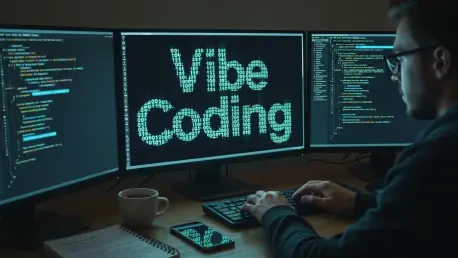Understanding the SaaS Industry Landscape
The Software-as-a-Service (SaaS) industry stands as a pillar of modern business, enabling organizations to access critical tools without the burden of on-premises infrastructure, revolutionizing how companies operate. This model offers scalable, subscription-based solutions that drive efficiency across sectors. With a market size valued in the hundreds of billions of dollars, SaaS supports everything from small startups to global enterprises, with key players like Salesforce, Microsoft, and Adobe dominating various segments. The industry spans both business-to-business (B2B) and direct-to-consumer (D2C) solutions, catering to diverse needs ranging from customer relationship management to personal productivity.
At the heart of SaaS lies its technological foundation—cloud computing—which allows seamless updates and accessibility from anywhere. Subscription models provide predictable revenue for providers while ensuring customers receive continuous value through regular enhancements. Scalability remains a cornerstone, enabling businesses to expand usage as they grow, while robust security measures protect sensitive data, a non-negotiable for enterprise clients. These elements collectively make SaaS indispensable in an era where digital transformation dictates competitive advantage.
Beyond technology, the economic impact of SaaS is profound, fueling job creation, innovation, and operational agility across industries like healthcare, finance, and retail. It empowers organizations to pivot quickly in response to market shifts, breaking down traditional barriers to technology adoption. As digital transformation accelerates, the industry’s role in shaping how businesses function and compete cannot be overstated, positioning it as a critical driver of global economic progress.
The Emergence of Vibe Coding in the Tech Ecosystem
What Is Vibe Coding and Why Is It Gaining Traction?
Vibe coding represents a disruptive shift in software development, where non-coders leverage generative AI tools to create custom applications using natural language inputs. This approach allows individuals without technical expertise to bypass traditional coding barriers, crafting solutions tailored to specific needs through intuitive platforms. The simplicity of describing a desired outcome and receiving functional code in return has captured the attention of businesses seeking rapid results.
The primary draw of vibe coding lies in its speed and flexibility, addressing pain points in the conventional software acquisition process. Unlike B2B procurement, which often stretches over months due to complex negotiations and vetting, vibe coding delivers immediate outputs, empowering users to solve urgent problems without delay. With buying cycles averaging between 84 and 170 days, frustration with these delays pushes companies toward self-reliant alternatives that promise quicker deployment.
Moreover, the customization offered by vibe coding resonates with organizations eager to address niche workflows that off-the-shelf SaaS products may not fully cover. This ability to craft bespoke tools without relying on external vendors or lengthy contracts enhances a sense of control. As a result, the trend is gaining momentum among those disillusioned with the rigidity and pace of traditional software purchasing, signaling a shift in how technology needs are met.
Market Impact and Adoption Trends
Across the tech landscape, vibe coding tools such as Cursor and Anthropic’s Claude Code are witnessing rising adoption, particularly among small-to-medium businesses and startups. These entities, often constrained by budget and time, find value in AI-driven solutions that reduce dependency on expensive SaaS subscriptions or dedicated development teams. Anecdotal evidence suggests a sharp uptick in the use of such platforms, as they democratize software creation for non-technical users.
While exact figures on market penetration remain elusive, the trend points to a growing preference for do-it-yourself (DIY) approaches in software development. Industry observers note that from this year onward, the proliferation of generative AI tools is likely to accelerate, with projections indicating significant growth in user base through 2027. This surge reflects a broader cultural shift toward immediacy, where businesses prioritize rapid prototyping over polished, long-term solutions.
Looking ahead, vibe coding could redefine expectations around software acquisition, pressuring SaaS providers to adapt to a market that increasingly values speed over depth. As more companies experiment with these tools, the demand for instant, tailored solutions may reshape vendor-client dynamics in the near term. This evolving landscape underscores the urgency for established players to address the underlying dissatisfaction fueling this movement.
Challenges Posed by Vibe Coding to SaaS Growth
Vibe coding’s emphasis on quick, custom solutions poses a direct challenge to the SaaS industry’s growth trajectory by shifting focus away from reliability and comprehensive features. While SaaS platforms are built for long-term stability, offering deep integrations and ongoing support, AI-generated tools cater to short-term needs, often at the expense of quality. This trade-off risks eroding trust in established providers as businesses opt for faster, albeit less robust, alternatives.
Specific vulnerabilities further complicate the picture, as vibe-coded applications frequently lack enterprise-grade security, exposing organizations to potential breaches and data loss. Compliance with industry standards, such as those governing data protection, is often absent in these DIY tools, creating significant risks for companies in regulated sectors. Additionally, scalability issues emerge when attempting to expand such solutions across larger teams, leading to inefficiencies that SaaS systems are designed to avoid.
Perhaps most concerning is the accumulation of technical debt and fragmented data environments resulting from reliance on patchwork solutions. Unlike integrated SaaS platforms that centralize information and streamline operations, vibe-coded tools can create silos, hindering unified decision-making. This trend also reflects a deeper dissatisfaction with SaaS sales processes, signaling a competitive threat if providers fail to address the root causes driving businesses toward these alternatives.
Regulatory and Security Concerns with Vibe Coding
The regulatory landscape presents a formidable hurdle for vibe coding, as AI-generated software often falls short of meeting stringent data protection requirements like GDPR or CCPA. Without built-in compliance mechanisms, businesses using such tools risk legal liabilities, especially in industries where privacy is paramount. This gap starkly contrasts with SaaS offerings, which are engineered to adhere to global standards, ensuring safer operations.
Security remains another critical concern, with unvetted, DIY applications lacking the fortified defenses that enterprise SaaS solutions provide. The potential for data breaches increases when organizations deploy code without thorough testing or oversight, jeopardizing sensitive information. Such incidents could lead to reputational damage and financial losses, issues that established providers mitigate through rigorous protocols and continuous monitoring.
SaaS companies hold a distinct advantage in regulated environments, where their commitment to governance and security reassures clients. However, the allure of vibe coding threatens to undermine these standards unless businesses are educated on the hidden dangers of untested tools. Providers must actively highlight the long-term risks of bypassing proven systems, emphasizing the importance of safeguarding data and maintaining compliance over chasing short-term fixes.
Future Outlook: Can SaaS Adapt to Counter Vibe Coding?
The rise of vibe coding may serve as a catalyst for SaaS providers to overhaul their approach to customer engagement and sales efficiency. By recognizing the demand for speed and personalization, companies can innovate with faster onboarding processes, allowing prospects to experience product value without enduring prolonged negotiations. Self-paced exploration tools and streamlined purchasing journeys could bridge the gap that drives users toward DIY alternatives.
Emerging technologies, such as AI-driven customization within SaaS platforms, offer a promising avenue to meet the need for tailored solutions while preserving security and scalability. These advancements enable providers to deliver bespoke experiences without compromising on the depth that distinguishes enterprise-grade software. By integrating such capabilities, SaaS firms can position themselves as both agile and reliable, countering the immediacy of vibe coding with sustainable value.
External factors, including economic fluctuations and potential regulatory changes, will also shape the balance between vibe coding and SaaS adoption. Tighter data protection laws could deter reliance on unvetted tools, while economic downturns might push budget-conscious firms toward cheaper, short-term fixes. Navigating these dynamics will require SaaS providers to remain vigilant, adapting strategies to align with shifting market priorities and buyer expectations over the coming years.
Conclusion: Navigating the SaaS Industry’s Path Forward
Reflecting on the insights gathered, it becomes clear that vibe coding, while appealing in its promise of speed and customization, exposes critical weaknesses in security and scalability compared to the robust frameworks of SaaS solutions. The trend underscores a deeper frustration with cumbersome B2B buying processes, revealing an urgent need for change within the industry. This tension highlights a pivotal moment where adaptation is not just beneficial but necessary for sustained relevance.
Moving forward, SaaS companies should prioritize actionable strategies to address these challenges, focusing on streamlining sales cycles to reduce friction and enhance buyer autonomy. Offering personalized demos and leveraging AI to tailor solutions could counter the allure of DIY tools, demonstrating immediate value without sacrificing long-term reliability. Educating the market on the hidden costs of vibe coding—particularly around compliance and data risks—emerges as a vital step to rebuild trust.
Ultimately, the path ahead demands a proactive stance, with SaaS providers investing in innovation to meet evolving demands while reinforcing their unique strengths. By tackling the root issues that fuel vibe coding’s rise, the industry can position itself to not only weather this disruption but to thrive through renewed customer focus and strategic agility.









